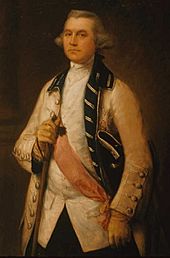Siege of Madras facts for kids
Quick facts for kids Siege of Madras |
|||||||
|---|---|---|---|---|---|---|---|
| Part of Seven Years' War | |||||||
 An 18th century sketch of Fort St. George |
|||||||
|
|||||||
| Belligerents | |||||||
| Commanders and leaders | |||||||
| Strength | |||||||
| 3,900 total 2,200 sepoys 1,700 Europeans |
8,000 total 4,000 Europeans 3,400 sepoys 600 native cavalry |
||||||
| Casualties and losses | |||||||
| 1,200 | |||||||
The Siege of Madras was a major battle that took place in India between December 1758 and February 1759. It was part of a bigger conflict called the Seven Years' War. During this siege, French forces, led by Comte de Lally, tried to capture the city of Madras. At that time, Madras was controlled by the British. However, the British soldiers defending the city managed to hold out. They kept fighting until help arrived. This British victory was an important event in 1759, a year when Britain had many successes around the world.
Contents
Why the Siege Happened: A Look at the Background
For many years, Great Britain and France were rivals. They both wanted to control parts of India. In 1746, the French had captured Madras during another war. But the city was given back to the British in 1748.
When the Seven Years' War began, the two countries started fighting again in India. By 1757, Britain was doing well in India. They had won several battles thanks to commanders like Robert Clive.
In 1758, French reinforcements arrived in India. They were led by Lally. He wanted to improve France's position on the Coromandel Coast. He successfully captured Fort St. David. This worried the British, as most of their troops were far away in Bengal.
Lally planned to attack Madras in June 1758. But he needed money. So, he first attacked Tanjore, hoping to get funds there. This attack was not successful. By the time he was ready for Madras, it was December. The monsoon season also caused delays. These delays gave the British more time to get ready. They brought more soldiers into Madras, boosting their defense to nearly 4,000 troops.
The Siege Begins: Fighting in Madras
In 1758, Madras had two main parts. The "Black Town" was where most local people lived. It had no strong walls. The "White Town" was smaller, where Europeans lived. This part was protected by Fort St George, a very strong fort.
First Fights: Skirmishes in the City
On December 14, French soldiers entered the Black Town. They found it undefended and started taking things from houses. The British then sent out 600 men. Colonel William Draper led this group. They attacked the scattered French soldiers.
Fierce street fighting broke out. About 300 soldiers from each side were killed. Draper's men then went back inside the fort. The fight didn't have a clear winner, and both sides lost many men. But it made the French soldiers feel less confident. The two French commanders, Lally and Bussy, started arguing. Lally was very critical of Bussy in front of everyone.
Heavy Fire: The Bombardment Starts
The French soldiers took their positions around Madras. They were ready to attack Fort St George. But they couldn't start firing right away. They were waiting for ammunition for their large siege guns. For three weeks, the guns remained silent.
On January 2, 1759, the guns finally began firing at the fort. For five days, they fired non-stop. But the French couldn't break through. The British defenses were still mostly intact. A large mine was set off under the fortress. But even this didn't do much damage to the walls.
French soldiers became even more discouraged. They saw that their attacks were not working. Many soldiers left their posts. About 150 of them even joined the British side. Lally also faced problems with his supplies. Muhammed Yusuf Khan, a British Sepoy commander, was attacking his supply lines. Yusuf Khan's forces were the only ones who had not gone into Madras. They stayed outside, bothering the French and stealing supplies.
Big Attack: A Major Assault
After many weeks of heavy firing, the French finally started to damage the city's defenses. The main part of the fort was destroyed. A hole was made in the walls. The constant firing had ruined much of Madras. Most houses were destroyed by shells.
On January 30, a Royal Navy ship managed to get past the French blockade. It brought a lot of money and more soldiers into Madras. More importantly, it brought news. The British fleet, led by Admiral George Pocock, was on its way from Calcutta.
When Lally heard this, he knew he had to act fast. He had to launch a final, all-out attack to take the fort before Pocock arrived. He held a meeting with his officers. They decided to fire intensely at the British guns. Their goal was to destroy them.
French Retreat: The Withdrawal
On February 16, six British ships arrived off Madras. They carried 600 more soldiers. Faced with this new threat, Lally made a quick decision. He decided to stop the siege and move his troops south.
What Happened Next: After the Siege
The British fired a huge number of cannonballs, 26,554, and over 200,000 cartridge rounds to defend Madras. The French failure to capture Madras was a big disappointment for them. It was a major setback for their plans in India.
The British victory at Madras was seen as part of the Annus Mirabilis of 1759. This was a year when Britain had many successes around the world. This victory helped set the stage for Britain to become the main power in India.
After this, British forces went on the attack in India. They soundly defeated a French force at Wandiwash. Then, they captured Pondicherry in 1761. These battles were a major turning point. They decided who would be in charge in India: Britain or France.
See also



